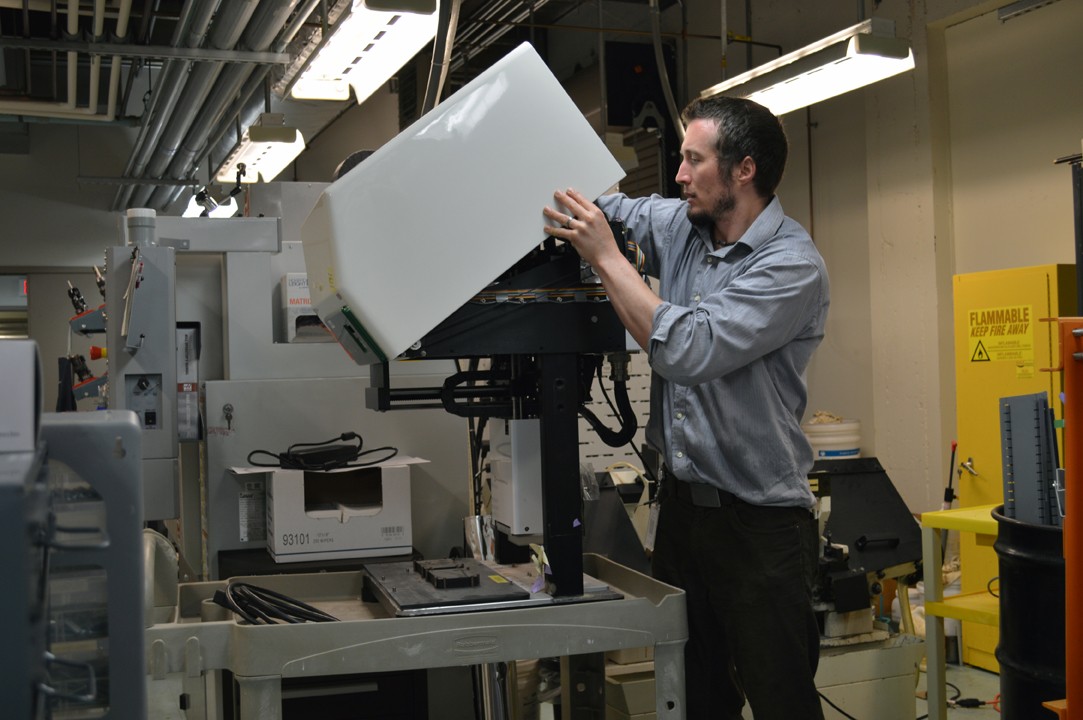Sculptor Maskull Lasserre is used to finding himself in unknown environments. In 2010, the artist traveled to Afghanistan as part of the Canadian Forces War Artist Program, where he experienced life in the middle of a war zone. Now, for the next year, Lasserre is immersing himself in a different foreign environment: the pioneering research culture of MIT’s Broad Institute, one of the premiere biomedical research organizations bringing together MIT with Harvard and its affiliated hospitals to transform medicine.
“Being in a research institute shocks you awake in a way that is tremendously fertile,” says Lasserre, adding, “There’s a tradeoff between perception and knowledge. Once you know something, you stop questioning it. Whereas if you’re uncertain, you’re always interrogating your sensory input and you’re aware of what you’re experiencing in a different way. I definitely prefer that mode of being.”
The Broad Artist-in-Residence program was developed by Todd Golub, a founding core member of the Broad Institute who also serves as the institute’s chief scientific officer and director of its Cancer Program. Golub’s idea for the artist-in-residence program originated after a chance encounter with the work of painter Daniel Kohn in a New York City gallery. “It’s actually a very natural fit to have artists embedded in a research community because so much of our research work does require creativity,” says Golub.
Artists, Golub suggests, inspire and provoke scientists to ask new questions, step out of their comfort zones, and embrace the spirit of experimentation that the Broad is known for. “The work of many scientists at the Broad involves revisiting old problems with new tools and that’s often what artists do too,” notes Golub. “By having the Artist-in-Residence program, we’re encouraging people to take on risky things that may not turn out in a predictable way.”
For Lasserre, making new work in a new environment allows him to think through new questions. “I don’t make things once I understand. I only make things I don’t understand,” he says, “You think through your hands as opposed to just rolling something around in your head, in the same way that a scientist will sketch out a diagram of a molecule.” In a way, he says, “the human mind is the least impressive of our faculties. There’s all other kinds of interacting with the world that might be more appropriate, we just have this love affair with logic and reason and language. There are other ways to be.”
2. The Broad Institute’s inaugural Artist-in-Residence Daniel Kohn discusses his experience.
3. Broad Institute’s artist-in-residence Guhapriya Ranganathan explores the process of the genome unfolding and links it seamlessly to the process of scientific collaboration at the Broad.

